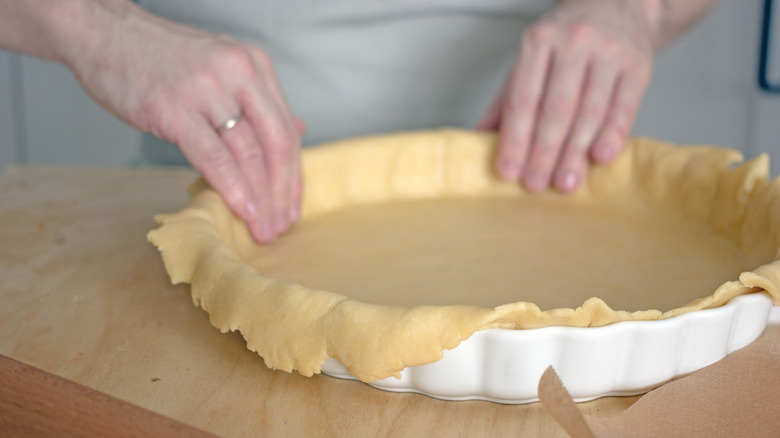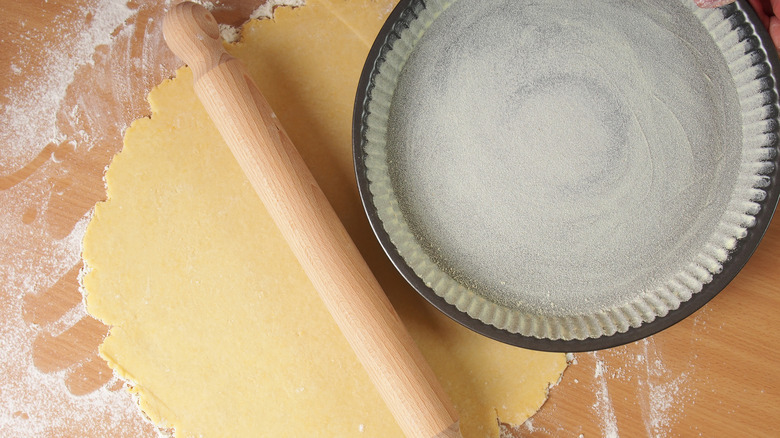How That Ceramic Pie Plate Is Ruining Your Crust
Pie is a showstopper dish, one that you unveil at the end of a dinner party to make all of your guests "ooh" and "aah" and gush about your obvious superiority in the kitchen. Presentation is everything in this case, and as long as you're going through the effort of assembling a fancy pie crust, it can be tempting to showcase the final product in an attractive ceramic pie plate. However, you should think again when selecting your baking dish, because ceramic, for all its beauty, is the least effective option.
Pie pans typically come in three varieties — ceramic, glass, and metal, per Martha Stewart. For a crisp, flaky, golden-brown crust, your best bet is the metal option, also known as a pie tin. They are typically made from aluminum, which conducts heat quickly. Glass dishes are another favorite with bakers because you can see right through them to observe the browning of the crust. They heat up slightly slower than metal but faster than ceramic, which is the key to achieving a perfectly-cooked crust.
Ceramic conducts heat slowly
Ceramic pie plates often leave you with a soft, pale crust because they conduct heat slowly. According to Thermtest, which makes equipment for measuring thermal conductivity, ceramic cookware is poorly suited for high-temperature tasks like searing, frying, or browning a pie crust because it takes a long time for the material to heat up. However, once ceramics come to temperature, they maintain heat very well, making them ideal for slow-cooked dishes like stews.
Thermtest notes that aluminum heats up quickly because of its high thermal conductivity, which is ideal for creating crisp, golden pie crusts that ceramics can't hope to achieve. Martha Stewart adds that another challenge with ceramic pie plates is that they tend to be larger and deeper than aluminum or glass pans, throwing off the cooking time. Metal and glass pie plates are typically cheaper than ceramics as well, making them a better choice for your pies and your wallet.

